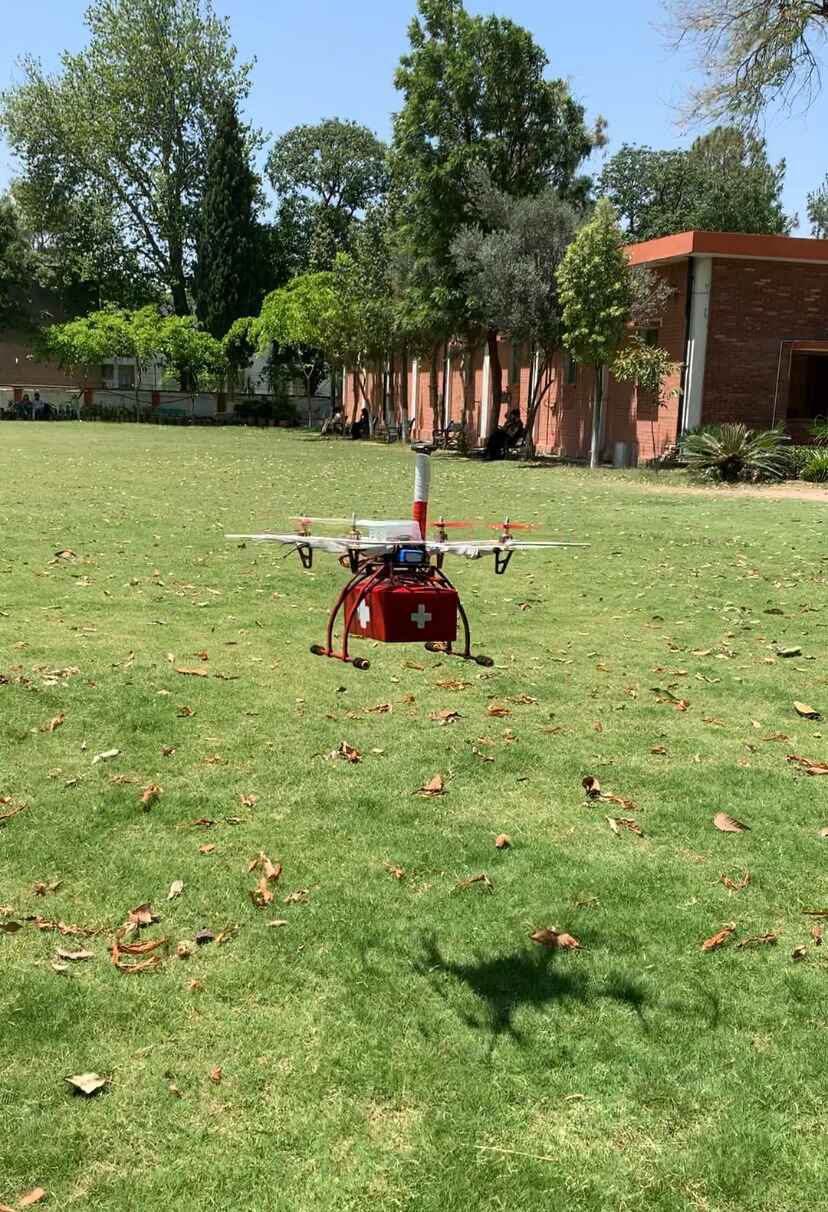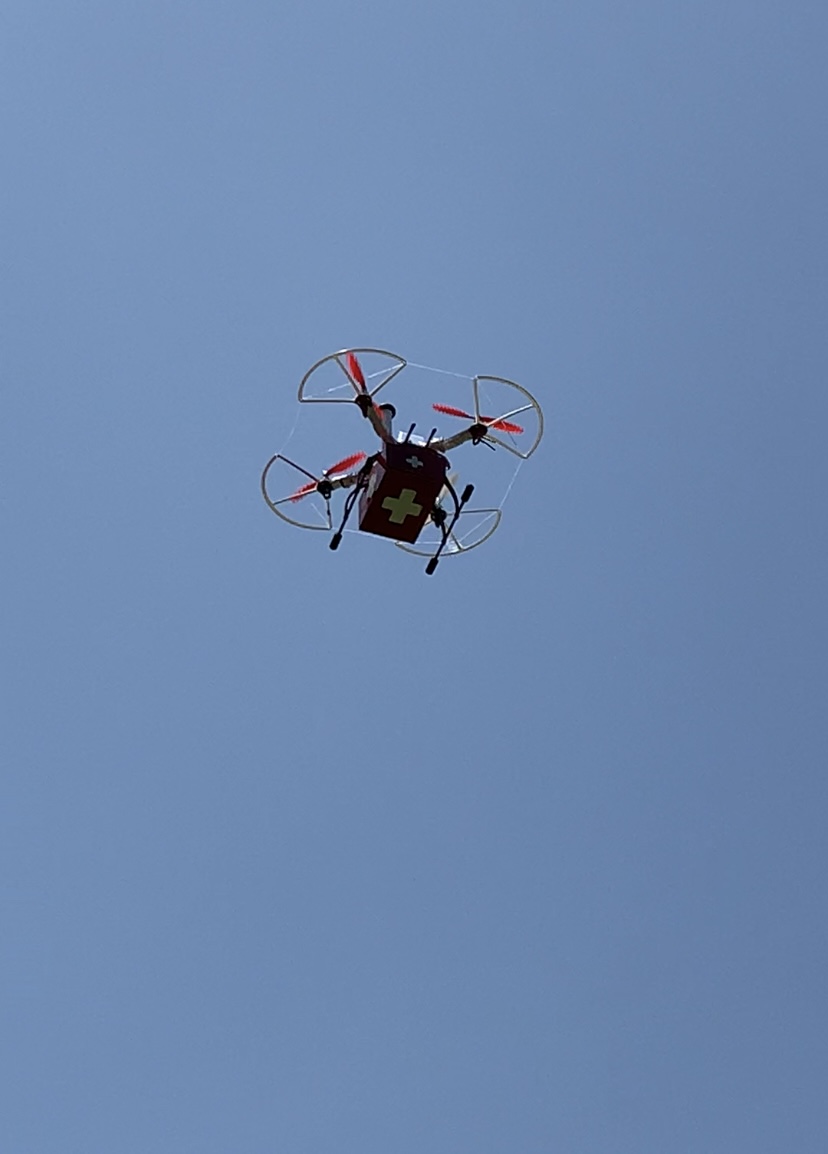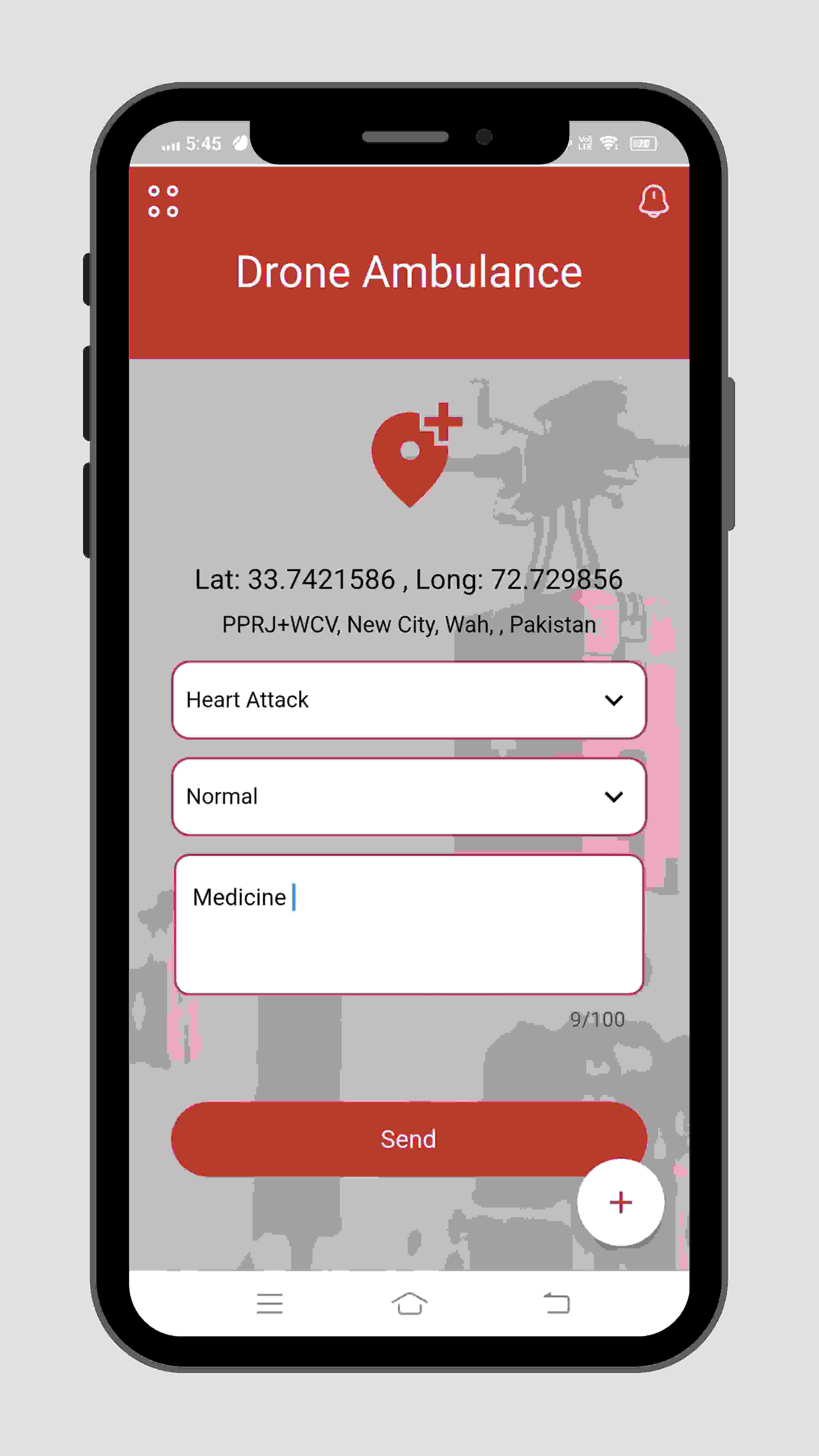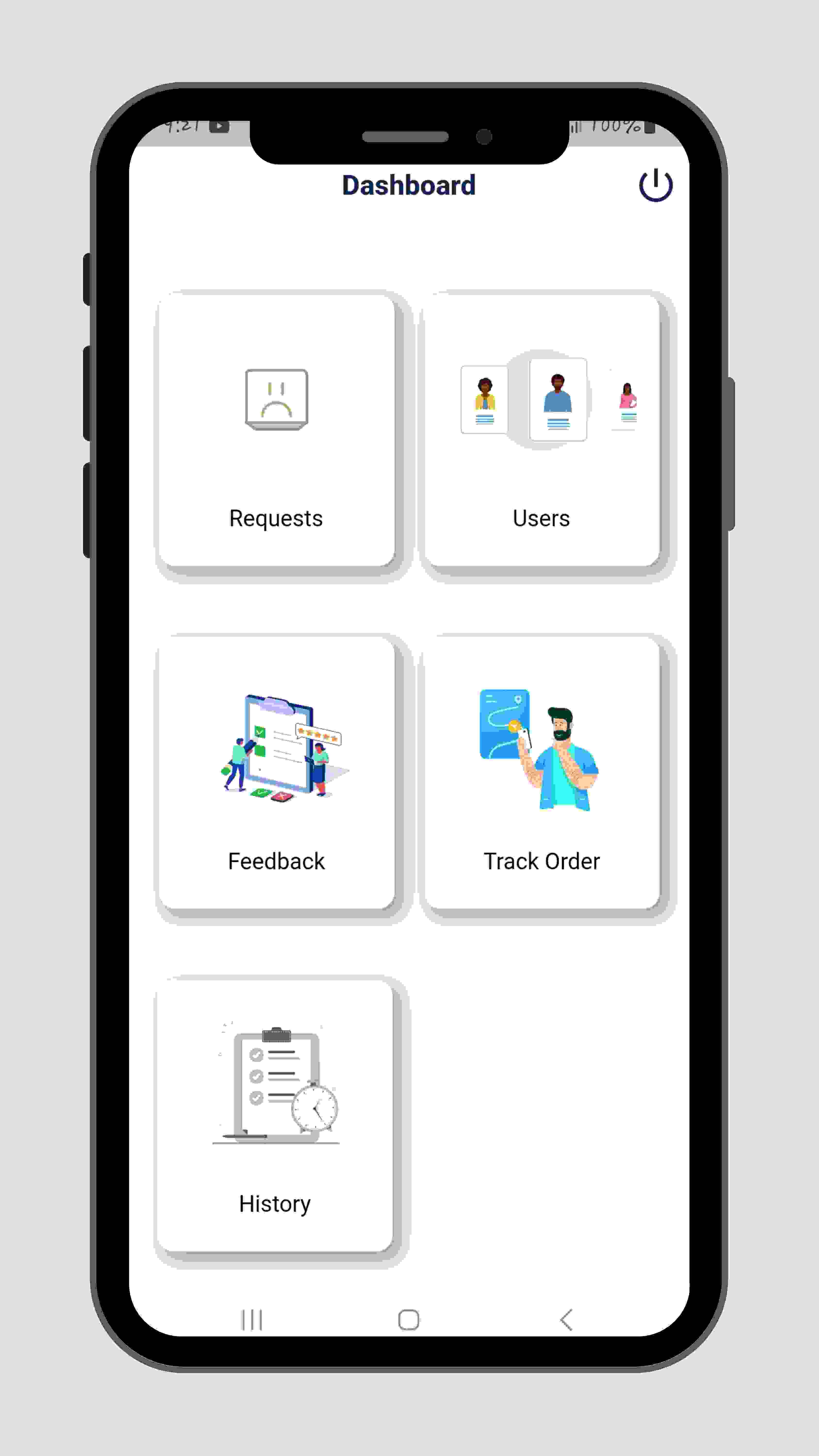The Autonomous First Aid Drone (AFAD) is a prototype developed to assist in saving human lives by delivering first aid kits to emergency situations quickly. The system comprises three main components: hardware, a service station (mission planner), and a mobile application. The AFAD system is cost-effective, faster, safer, and accessible, providing quick access to life-saving equipment and medical supplies in areas where traditional methods of transport are inaccessible.
Objectives
Fast Response: Drones offer a faster first aid supply in case of an emergency.
Cost-effective: Using electric and autonomous drones for first aid can result in lower cost and can save lives.
Increase Survival Rate: The AFAD can help improve survival rates by providing quick access to life-saving equipment and supplies.
Safer delivery: Especially at times of pandemics, the need for contactless first
aid supply increased to reduce the spread of diseases.
Reduce Human Risk: The use of an AFAD in emergency situations can reduce the risk of harm to emergency responders and other individuals involved in the
rescue effort.
Accessibility: The AFAD can reach areas that are difficult to access by road or other means of transport, making it possible to provide medical aid to people
who would otherwise not have access to it
Socio-Economic Benefit
The benefits of AFAD (Autonomous First Aid Drone) can be numerous. Here are some potential benefits:
1. Faster response times: AFAD can reach the scene of an emergency quickly, even in remote or hard-to-reach areas, which can help reduce response times.
2. Increased access to medical care: AFAD can deliver medical supplies, such as first aid kits, defibrillators, and medications, to people who may not have immediate access to medical care.
3. Enhanced safety for first responders: AFAD can reduce the risk of injury to first responders by allowing them to assess the situation from a safe distance before entering a potentially dangerous area.
4. Improved survival rates: By delivering medical supplies and care quickly, AFAD can potentially improve survival rates for people experiencing medical emergencies.
5. Cost-effective: AFAD can be a cost-effective alternative to traditional emergency response methods, such as ambulance services, particularly in rural areas or during disaster situations.
Overall, the implementation of AFAD has the potential to revolutionize emergency response and improve outcomes for people in need of urgent medical care.
Methodologies
The implementation of the Autonomous First Aid Drone (AFAD) would require several steps to ensure the successful deployment of the drone and its accompanying application. Here is a suggested implementation method for AFAD:
1. Mobile Application Development: Develop the application "Drone Ambulance", to take first aid details and location coordinates from customers.
2. Hardware and Software Procurement: Procure the necessary hardware components for the drone and the mobile devices that will be used to control the drone. Also, obtain the required software tools and applications for developing the drone's software.
3. System Testing: Conduct system testing to ensure that the AFAD performs as expected. This includes testing the autonomous flight, and delivery of first aid kits, and application functionalities.
By following this implementation method, you can ensure a successful deployment of the Autonomous First Aid Drone and its accompanying application.
Outcome
Complete autonomous drone and Mobile Application.











